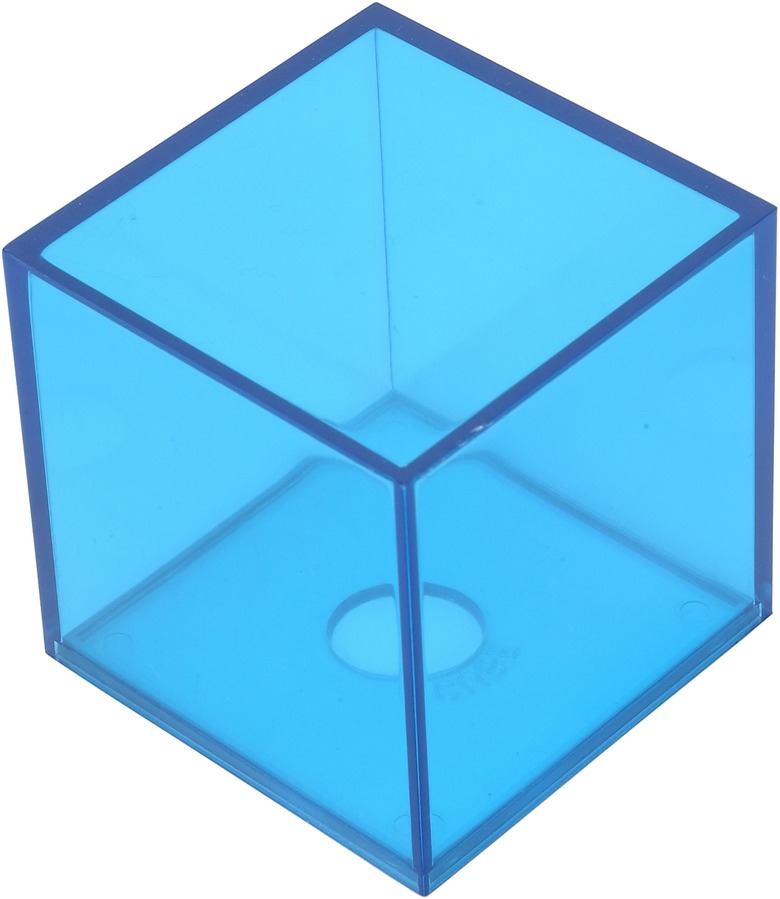How To Find Cubic Feet
When you talk about finding the cubic feet of an object, you're actually talking about finding its volume – the amount of three-dimensional space it takes up – or, to think of it another way, how much water it can hold. Either way, learning to find cubic feet begins with the simplest geometric shape, a cuboid.
How to Find Cubic Feet
How to Find Cubic Feet
Whether you're using a cubic feet calculator or doing the calculations yourself, you need three pieces of information to find the volume of a cuboid: That shape's length, width and height. There's just one catch: If you want the result to be in cubic feet, every dimension must be measured in feet too.
Once you have those three dimensions, multiply them all together to find the volume of your cuboid shape. The formal formula is:
\(\text{volume}=\text{length}\times\text{width}\times\text{height}\)
Here's an example. Imagine that you're asked to find the volume, in cubic feet, of a rectangular box that measures 2 feet by 4 feet by 1.5 feet. Multiply all three dimensions together, making sure to write the unit of measure for each one:
\(\text{volume}=2\text{ ft}\times 4\text{ ft}\times 1.5\text{ ft}=12\text{ ft}^3\)
So the volume of that cuboid is 12 ft3.
**Tip:** Your teacher may dock points if you don't write down the unit of measure for each measurement. But even if you're not actively taking classes, writing down those units is a good habit. It makes it much easier to double-check your own work, and also helps you choose the right unit to express your results.
Going From Inches to Cubic Feet
Going From Inches to Cubic Feet
What if the measurements you're dealing with aren't in feet? The formula for volume of a cuboid only works if all three dimensions are given in the same unit. So if some or all of the dimensions are in inches instead, you can convert them to feet before you start doing your calculations.
**Example:** Consider a box that measures 1 foot long by 9 inches wide and 6 inches high. Before you begin your calculations, convert those inches into feet, giving you measurements of 1 foot by 0.75 foot by 0.5 foot. Now that all three dimensions are given in feet, you can multiply through your formula to find the volume of the box:
\(\text{volume}=1\text{ ft}\times 0.75\text{ ft}\times 0.5\text{ ft}=0.375\text{ ft}^3\)
**Did you notice?** The formula works even if your dimensions are smaller than one unit, whatever that unit of measurement may be.
For another example, view the video below:
Converting Cubic Inches to Cubic Feet
Converting Cubic Inches to Cubic Feet
What if you already have the cubic volume of the shape in question, but it's given in cubic inches instead of cubic feet? You can still convert it into cubic feet, but watch out: There's a trap here. Because you know that there are 12 inches in a foot, it might be tempting to divide your volume in cubic inches by 12 and call it good.
That is how you would convert from linear inches to linear feet. But remember, 1 cubic foot equals 1 ft × 1 ft × 1 ft. When you convert those measurements to inches, you'll see that 1 cubic foot equals 12 in × 12 in × 12 in = 1728 in3.
So if you want to convert from cubic inches to cubic feet, you must divide by 1728. For example, if you have a box with a volume of 4320 in3 and you want to convert that to cubic feet, you'd calculate thusly:
\(\frac{4320\text{ in}^3}{1728}=2.5\text{ ft}^3\)
So the volume of the box can also be expressed as 2.5 ft3.
Cite This Article
MLA
Maloney, Lisa. "How To Find Cubic Feet" sciencing.com, https://www.sciencing.com/find-cubic-feet-4531317/. 15 December 2020.
APA
Maloney, Lisa. (2020, December 15). How To Find Cubic Feet. sciencing.com. Retrieved from https://www.sciencing.com/find-cubic-feet-4531317/
Chicago
Maloney, Lisa. How To Find Cubic Feet last modified August 30, 2022. https://www.sciencing.com/find-cubic-feet-4531317/
